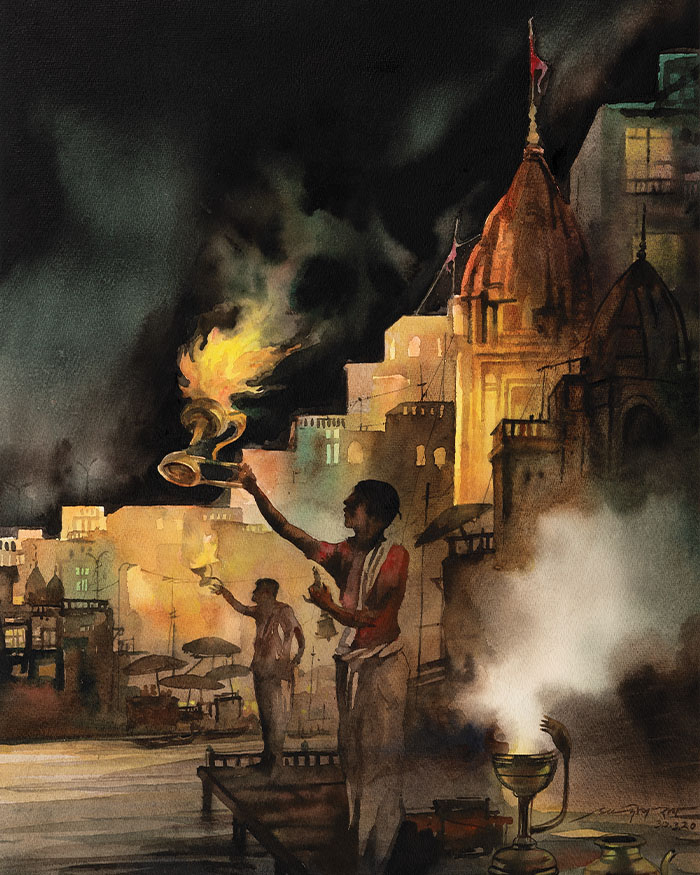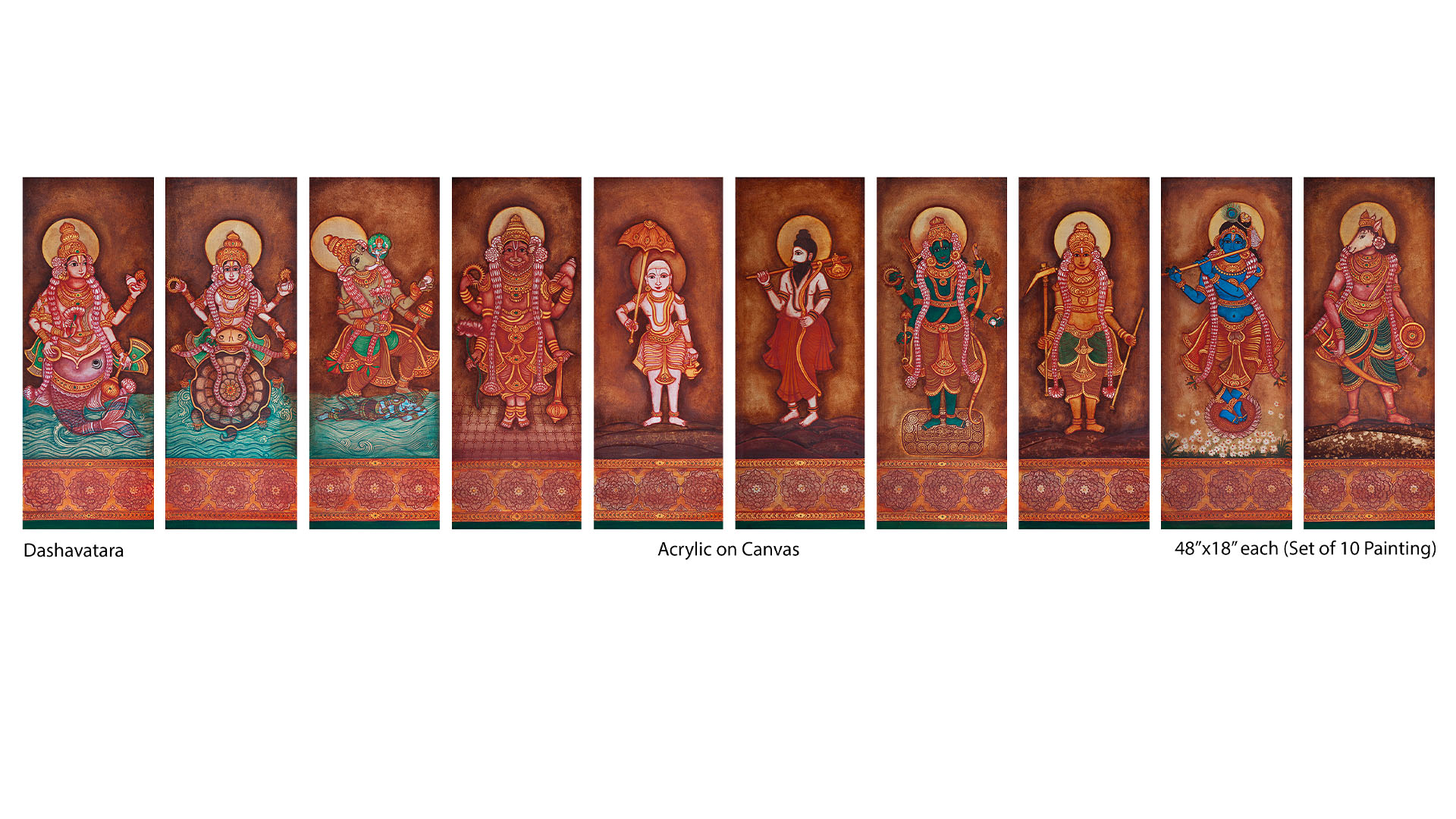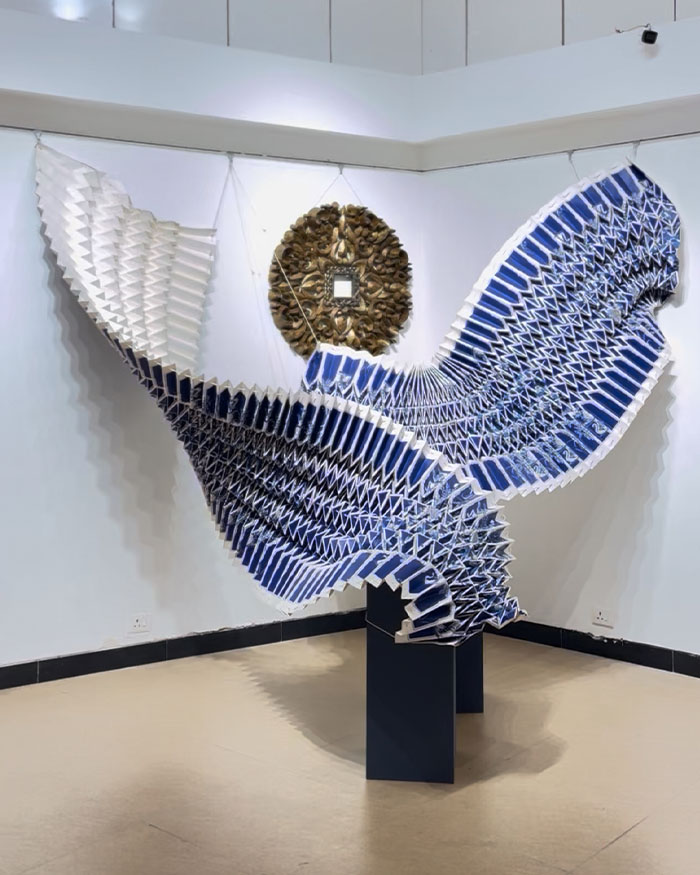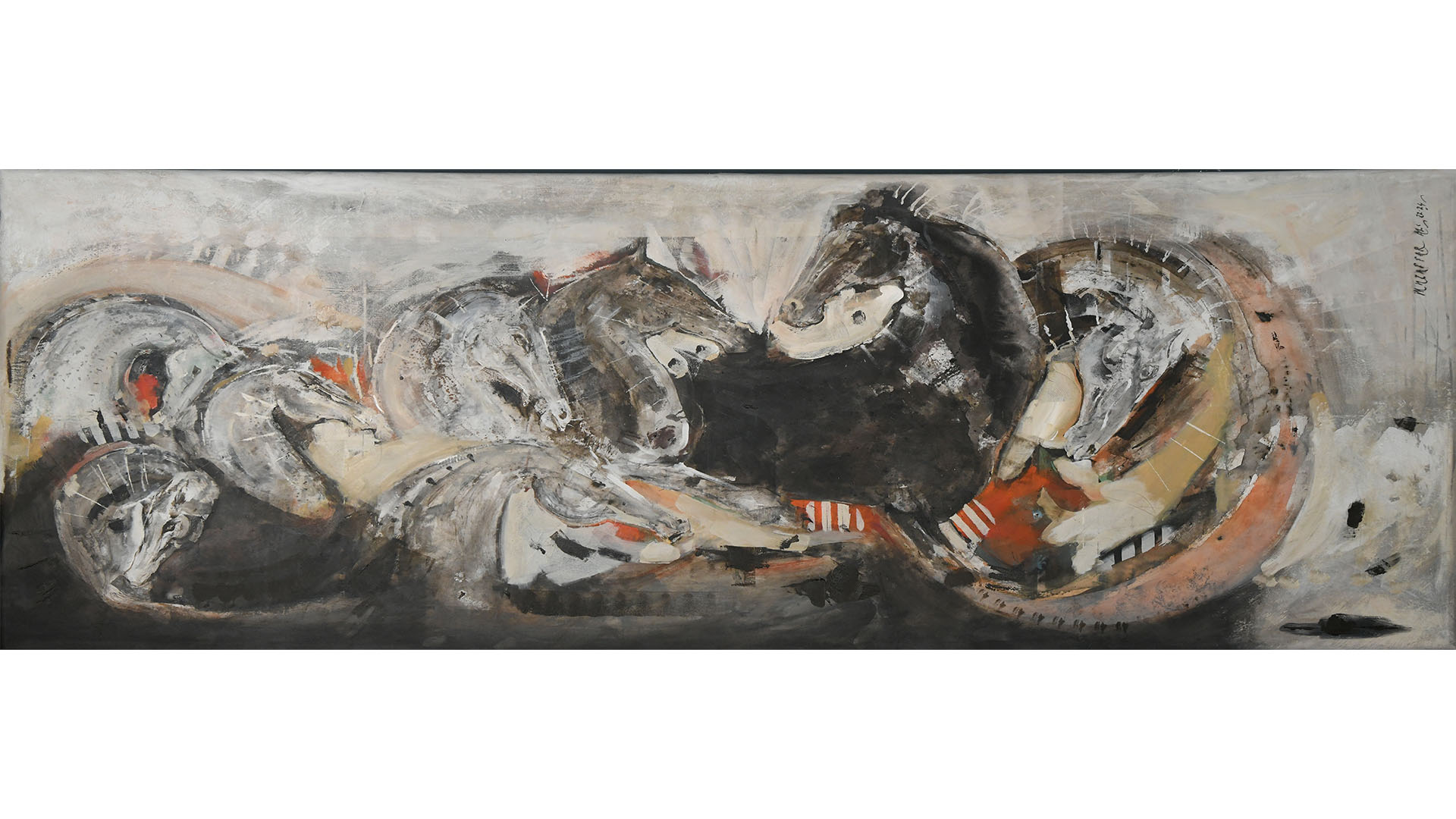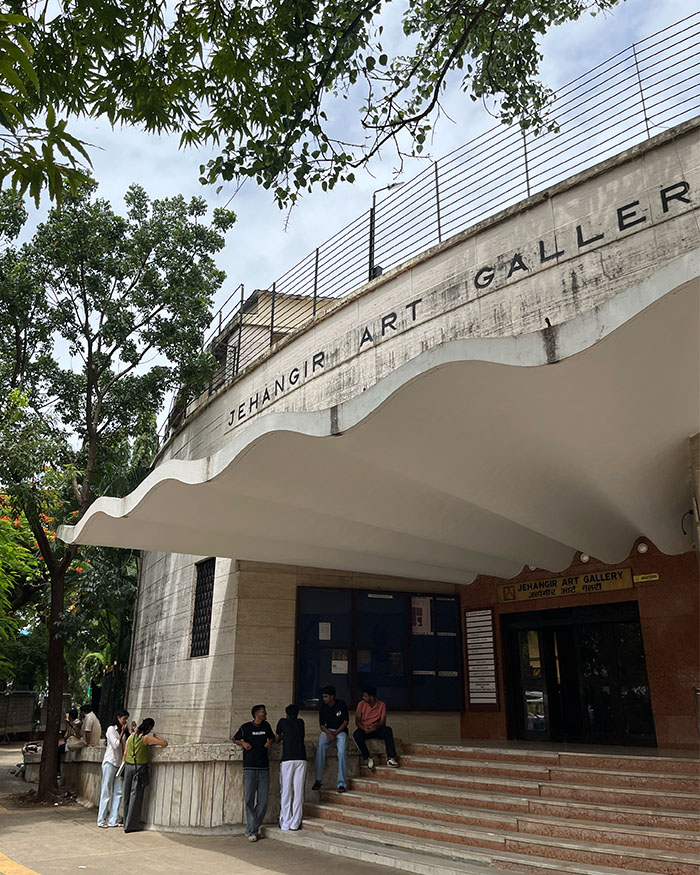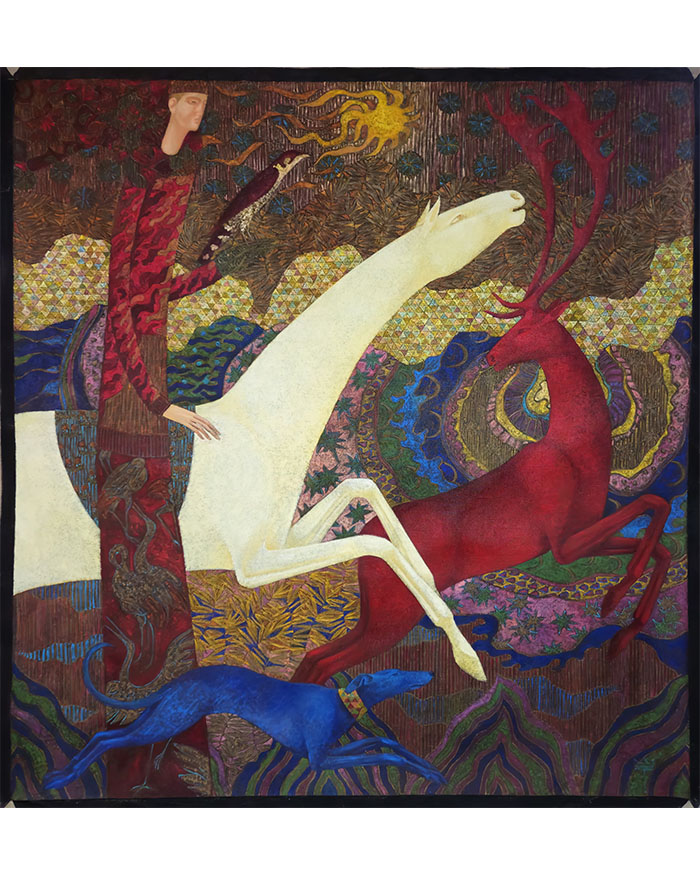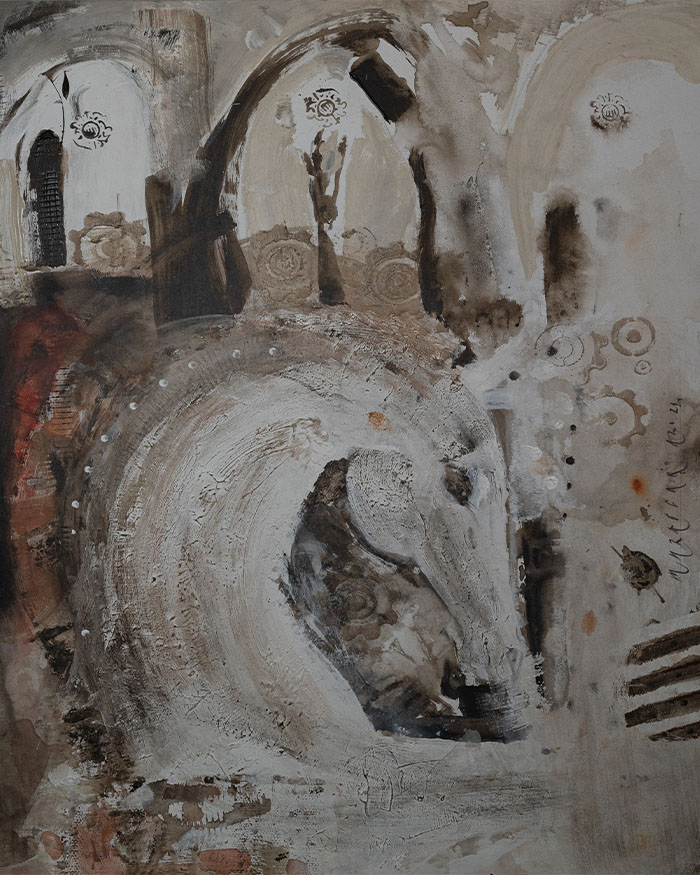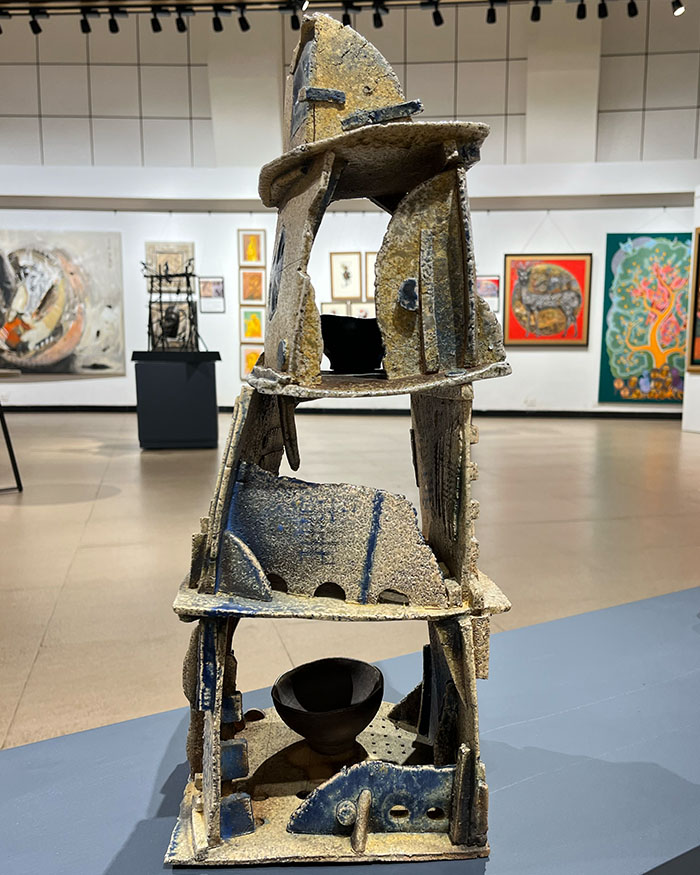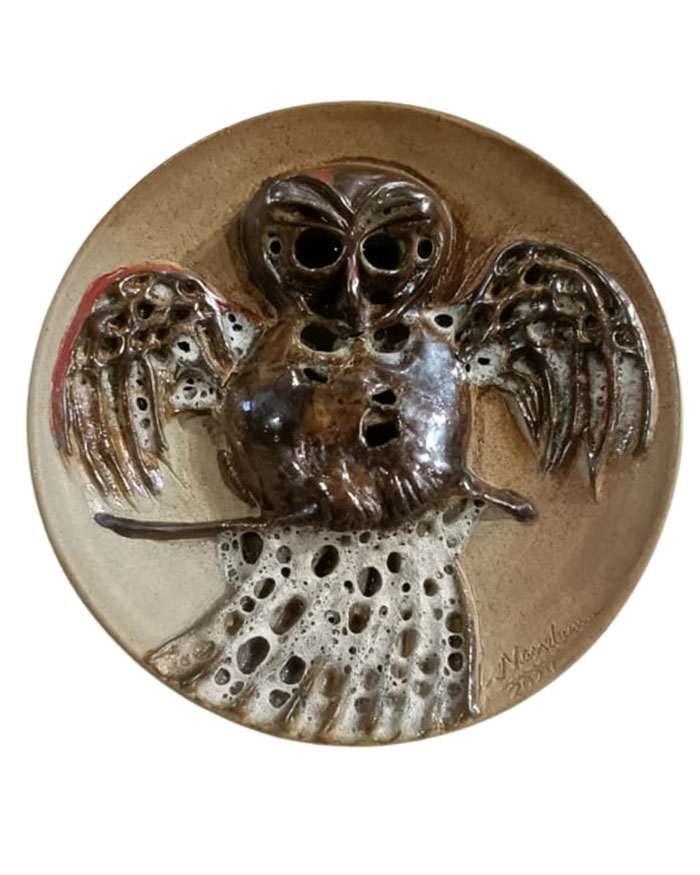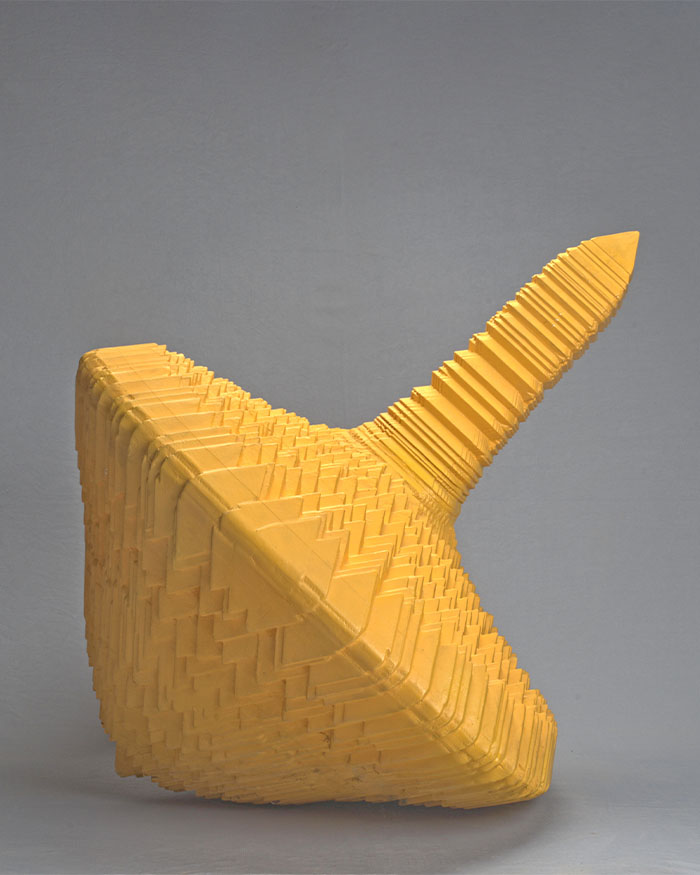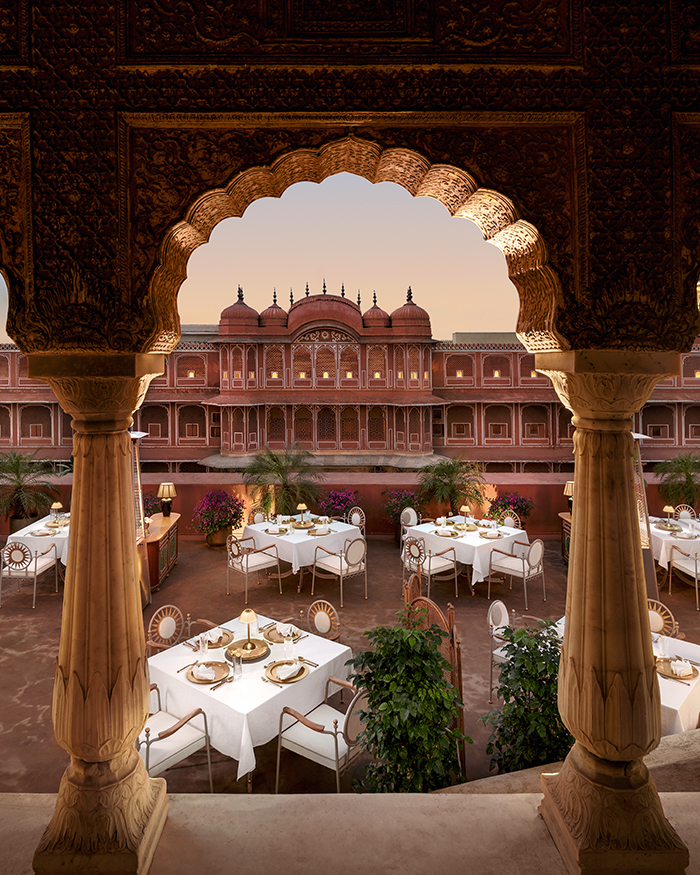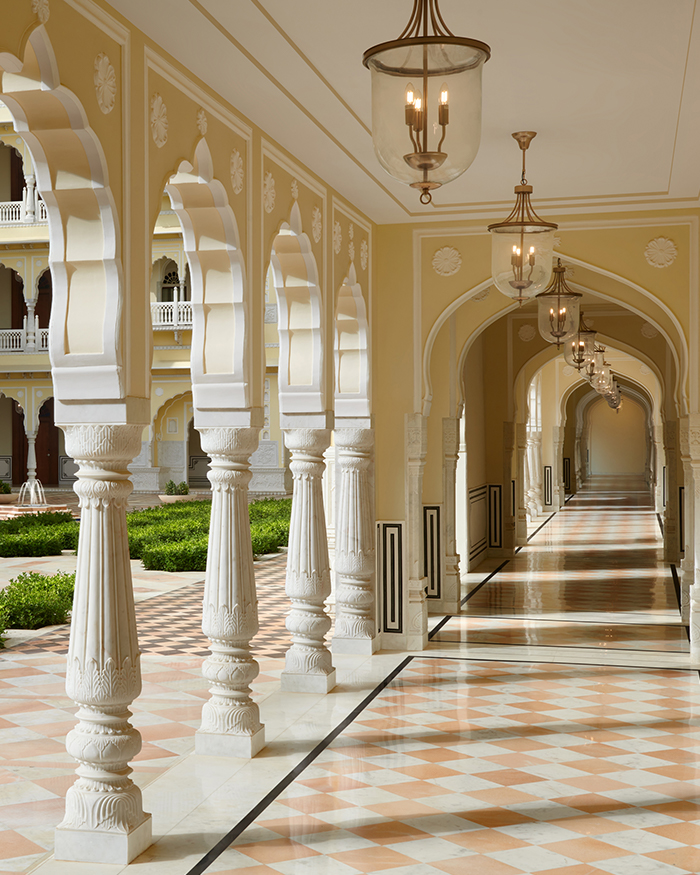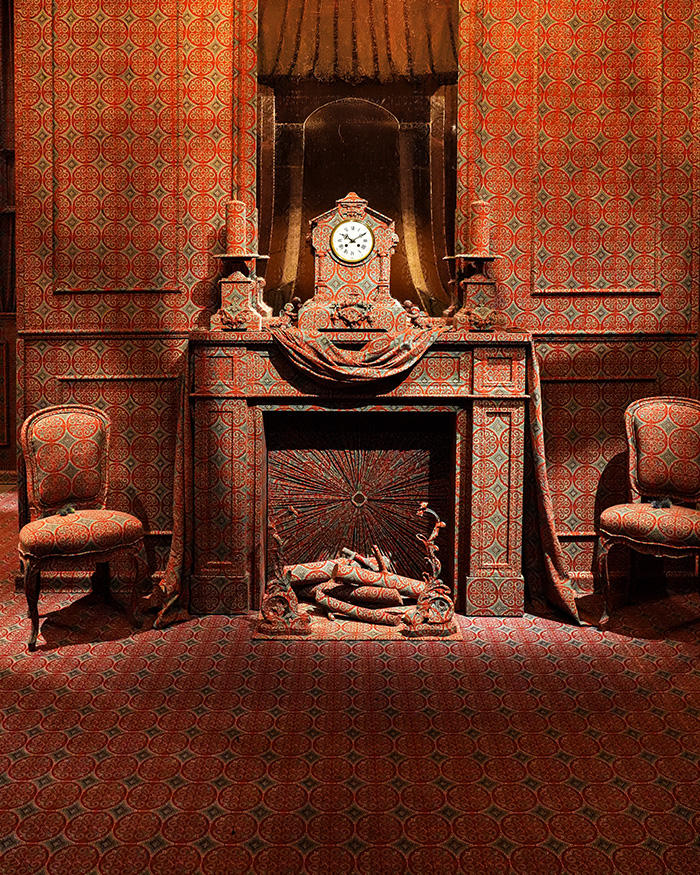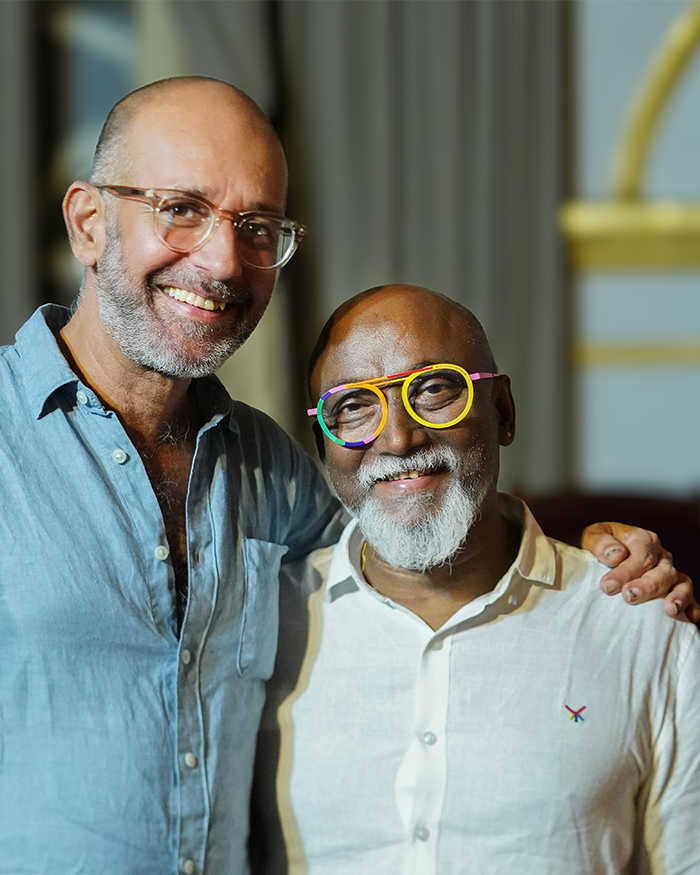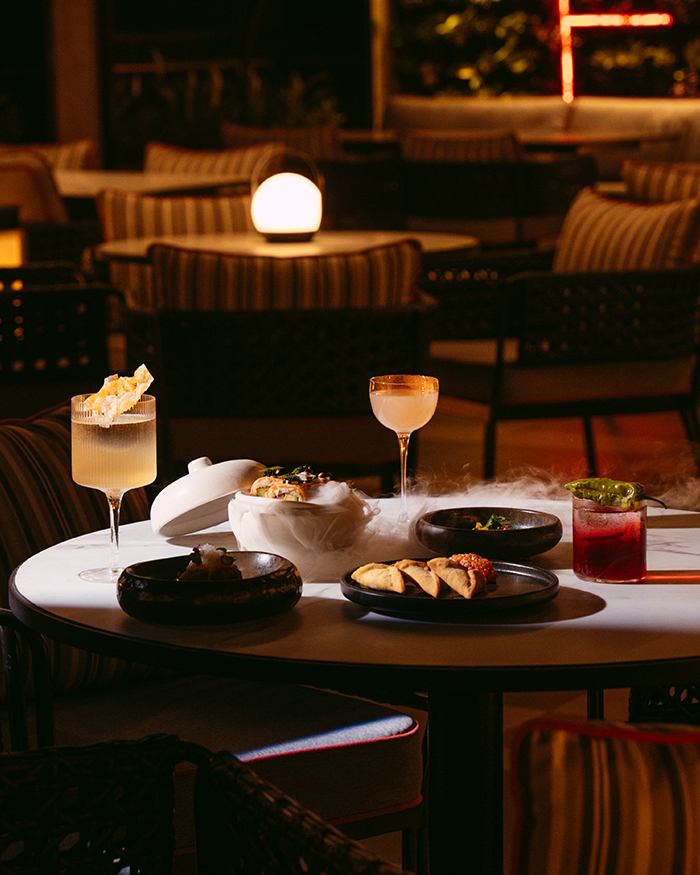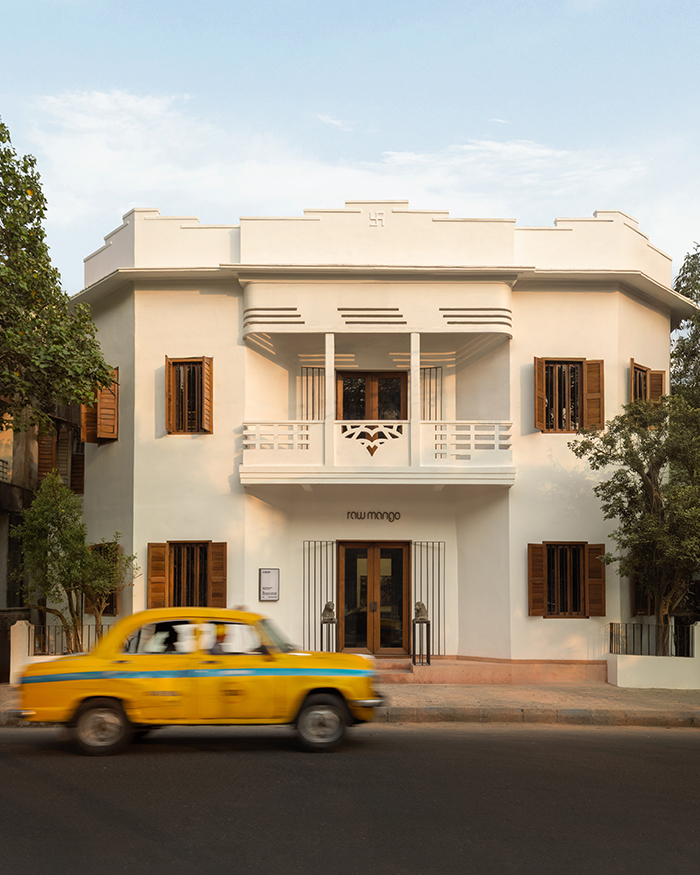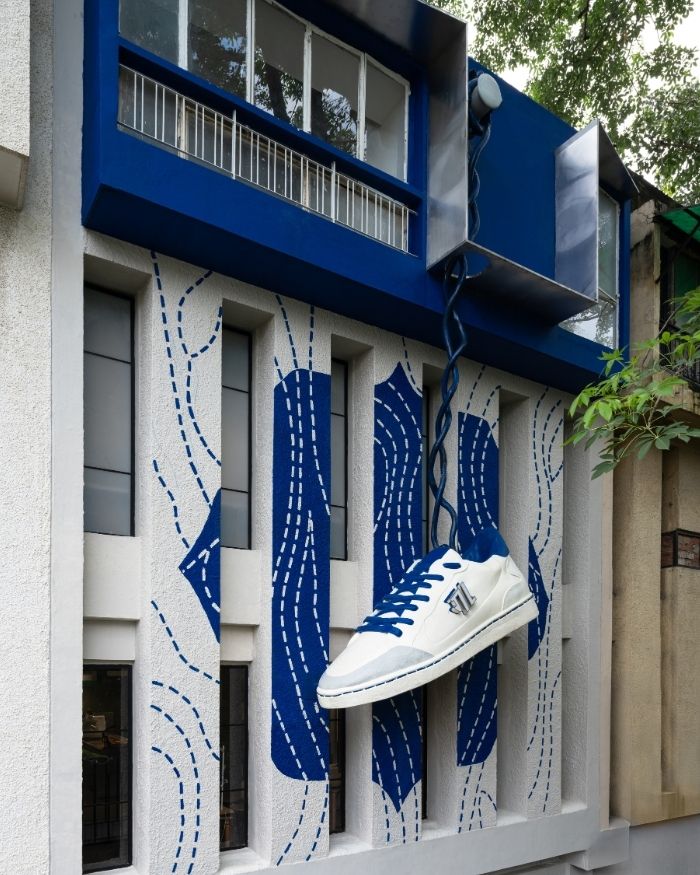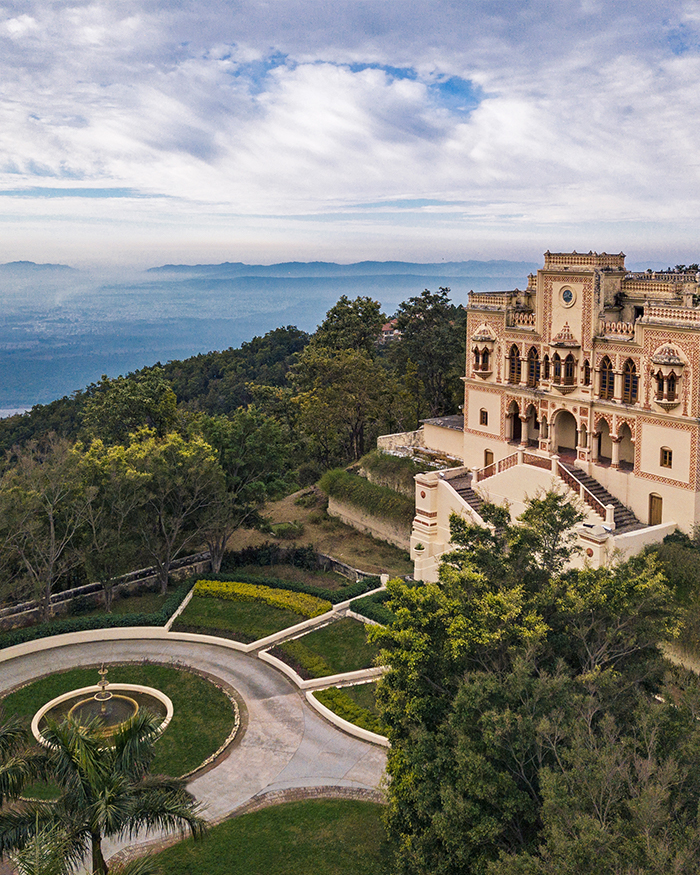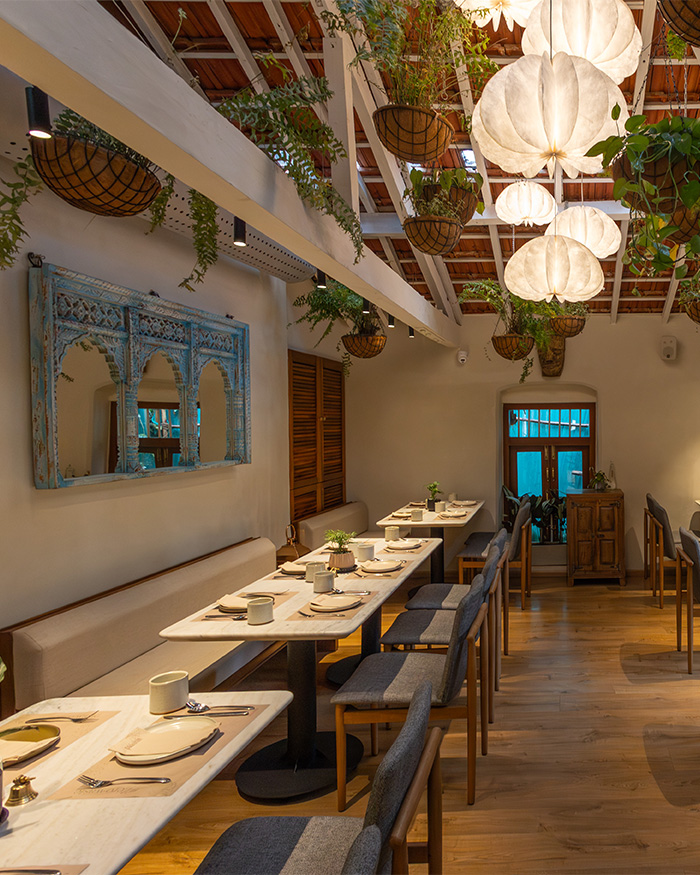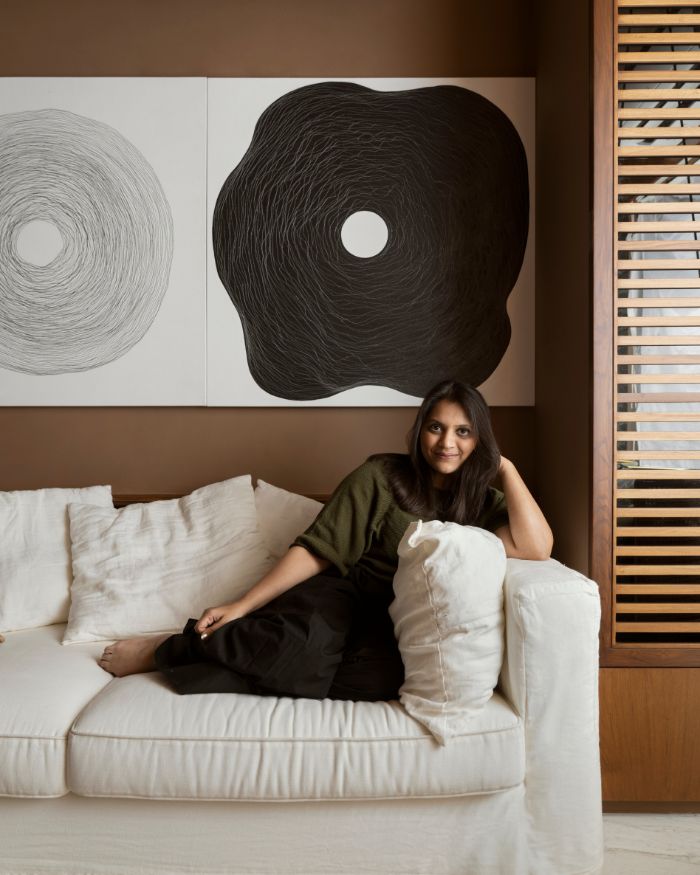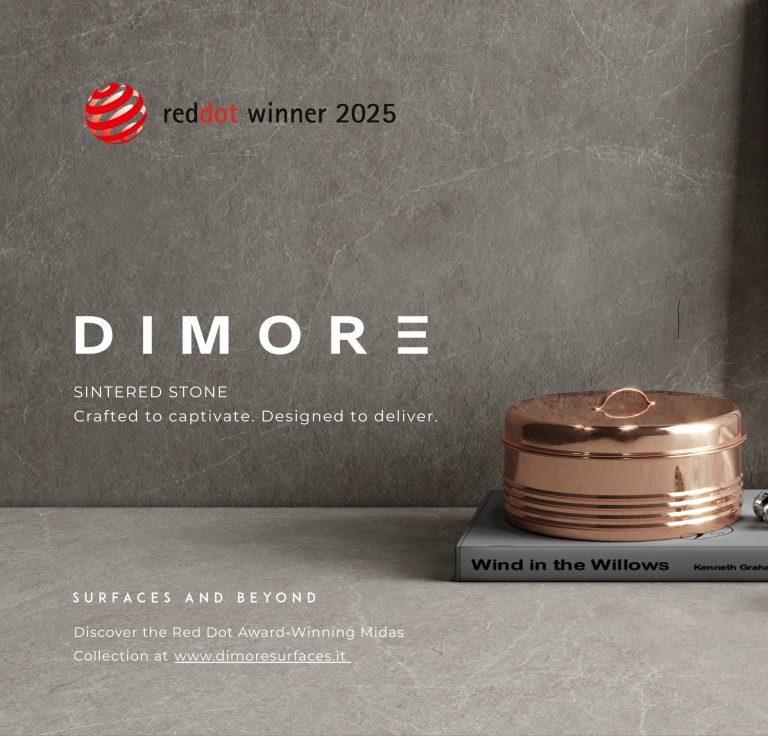Diving headfirst into the deep end of the pool. Entering an art gallery is close to that split-second disorientation. Flashes of colour, materials and ideas. An unease takes hold, bordering on discomfort. Just until it starts to make sense. As I traced this familiar unfamiliar route around Voices, a group exhibition in Mumbai at Jehangir Art Gallery, I met the curator, Uma Nair.
At the show presented by Ahmedabad’s Bespoke Art Gallery, founded by collector Devin Gawarvala, Uma brings together 26 Indian and international artists (from Devin’s collection). “The role of a curator is about giving people something new, not necessarily an artist but a new experience,” she tells me. Having written about their work and been involved in the arts for over three decades, she can now recall each of their trajectories from memory. Instead of the familiar unfamiliarity so often the case with galleries, she imparts a way of seeing. How to transcribe the multiplicity of voices? How to parse meaning?
"Why do we still mistake intellectualism for intelligence, both for people who create art and those of us who perceive it?"

